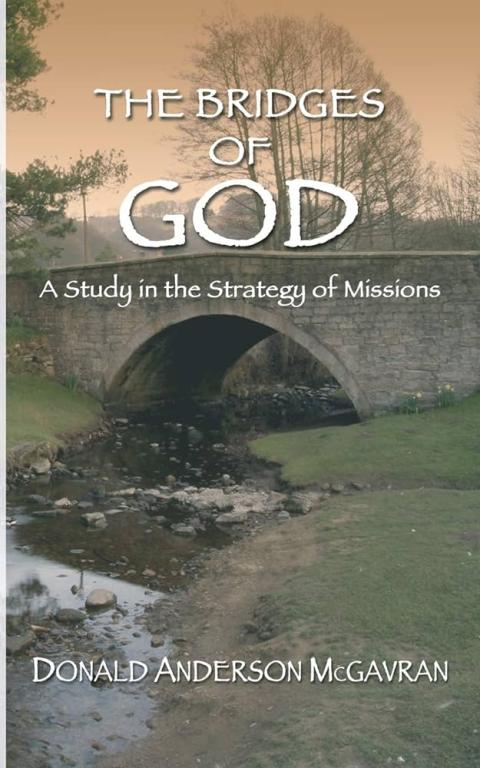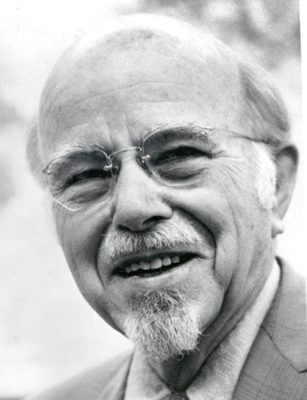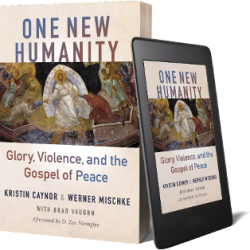The following is a guest post based on Matthew Bennett’s Amazon review of Donald McGavran’s famous Bridges of God.
Matt (Ph.D., SEBTS) is an Assistant Professor of Missions and Theology at Cedarville University in Cedarville, OH. Prior to taking this post, he and his family lived in North Africa and the Middle East for seven years.
A Troubled Legacy
In my estimation as a missiologist, this small book (Bridges of God) is responsible for most of the worst parts of contemporary missiology. While certainly not intended and perhaps partially warranted, McGavran’s proposals here lay the groundwork for the prevalent contemporary reductionism and for the destructive proposals of the Homogeneous Unit Principle’s (HUP’s) incorporation into strategic planning in missions.
 McGavran grew weary of the extraction and Anglicization of Indian converts in the missionary methodology of his day. This is a valid concern and his desire to push missionaries into the culture and into the communities was proper and good as a corrective to the modus operandi of his day.
McGavran grew weary of the extraction and Anglicization of Indian converts in the missionary methodology of his day. This is a valid concern and his desire to push missionaries into the culture and into the communities was proper and good as a corrective to the modus operandi of his day.
McGavran’s Controversial Approach
However, in his exuberance to see greater movements of peoples to faith in Christ, he also offered a hermeneutically, theologically, and strategically bankrupt vision of the missionary task. Inexplicably and unjustifiably, he broke the Great Commission of Matthew 28 into two parts. On pages 14-15 of Bridges of God he posits without justification, that the verb of command in Mt 28:19 translated as “make disciples” is a “first step” and a “first stage” of exposure to the gospel.
What has traditionally been understood as evangelism–particularly evangelism among peoples who have not had a testimony to the gospel–is what McGavran has in mind here as he radically redefines the idea of “making disciples.” That he intends this reductionistic understanding of “make disciples” can be seen by two subsequent quotes from this section:
First, on page 15, McGavran writes,
“In discipling, the full understanding of Christ is not the all-important factor, which is simply that He be recognized by the community as their sole spiritual Sovereign.”
He concludes the next paragraph with the startling consequence of his reduced definition, writing,
“The peoples of Britain were discipled centuries ago. The conversion of each new generation is a continuing task of the churches, but it is certainly not the disciplining of the British peoples.”
And if that wasn’t enough to establish my interpretation of his point, he goes on to write,
“The discipling of peoples is often hindered or actually stopped because, in the very first stage, the church leader requires evidence of an ethical change or dedication to Jesus Christ which some Christians in the older Churches have not yet achieved. Emphatically both ethical change and dedication will come in due time, provided that the old idols are cast away and the community thinks of the Bible as ‘our book’, Jesus Christ as “our Lord’, receives adequate biblical instruction, and is led into the habitual worship of God. But such growth is not an essential part of the first stage.”
Strategic Shifts in Missions
He goes on, then, to separate the commands of the Great Commission into distinct stages with “teaching them all things” being attached not to discipling a people but to completing the establishment of a Christian civilization. Such a move is not at all warranted by the text which holds these commands together under a verb of command connected to three imperatives which derive the force of a command from the first verb according to Greek grammar.
This allows him to locate the primary missionary task as his redefined ministry of exposing people as communities to Christ in ways that allow them to draw more and more of their shared identity from Christ, the Word, and the idea of church instead of temple, shrine, or mosque. Teaching is relegated to a later concern that will be picked up once the “discipling” has occurred.
If you’re aware of the controversy surrounding various movements within missiological/methodological conversations these days, the groundwork of McGavran readily shows its shaping effect on the structures that have been built upon it.
McGavran’s Enduring Influence
Along with this, McGavran also provides the infrastructure for what he will later develop into the Church Growth Movement when he returns to the US and gets associated with Fuller Seminary, Peter Wagner, Charles Kraft, and the like. I am referring to his comments regarding the most expedient way to effect a people movement to Christ. On page 23, he writes,
“The early church grew within Judaism. For at least a decade the Jews who were becoming Christians were not conscious at all of joining a non-Jewish religion. Had they dreamed that this was a possibility many of them would never have become Christians.”
Here I pause in the middle of this larger section to point out something pertinent and something that smuggles in a dangerous sociological erosion of McGavran’s theology. On one hand, he is right to note that the early community of believers likely simply saw themselves as having found the Jewish Messiah and who were now living as those on the far side of his arrival. There is much to commend about this observation and it does shape even the way that the writers of the New Testament viewed the Hebrew Scriptures and now understood them in the light of Christ.

However, the dangerous sociological priority that McGavran smuggles in here is that he argues–or rather posits baldly–that those who came to faith in the Messiah and who experienced conversion WOULD NOT HAVE CONVERTED TO CHRIST if they thought they were not still part of the Jewish community.
Conversion, thus construed, is viewed as a social movement not a work of the Spirit to bring new life in the heart of a believer. This is dangerous and it has also contributed significantly to some of the contemporary proposals for “Insider Movements” where people promote the retention of “socio-religious” identities while reconstruing non-Christian theological categories to approximate biblical teaching.
Back to the quote, though. McGavran continues, writing,
“Even after they were changed by fellowship with the Living Christ, they refused to accept Gentile Christians as full members of the Jewish Christian people! [Another aside – this is seen by McGavran as POSITIVE proof for what he is about to propose instead of what Paul sees as a gospel-denying hypocrisy – Galatians 2] The bearing of this on the growth of People Movements to-day is significant. It shows that peoples become Christian fasted when least change of race or clan is involved. When it is felt that ‘we are moving with our people and those who have not come now will come later’, then the Church grows most vigorously.”
There is so much to unpack here, but basically, this observation–alternatively stated as “birds of a feather flock together”–becomes the baseline for developing strategies that seek to identify affinities, ethnic similarities, preferences, languages, and sundry other identifying features of sub-groups of people in order to target that sub-group with the gospel.
The Dangers of the HUP
While different languages do divide a society in a way that is difficult to transcend in a way that will allow for a unified gathering of believers, the other features are often sinful, selfish, prideful, and destructive aspects of society’s rationale for creating “us” categories that are contrasted with “them” categories.
This is particularly harmful when the “us” is associated with a singular clan, race, ethnicity, or tribe and intentionally kept separate from “them” groups. The same could be said for economic divides, educational divides, and other elements of society that push people away from those who are “not like them.”
Rather than being noted as a part of the sinful and selfish human tendency to exclude difference, this observation was turned into a key baseline proposal for missions work, church growth, and for unlocking the explosive potential for exponential growth at a rapid rate that was promised in the early 2000s missionary literature.
It came to be known as the Homogeneous Unit Principle (HUP) and it drove many church planters, missionaries, and pastors, to dissect their communities, find sub-groups that shared affinities and could be made to “move as one” toward Christ in the same way as a fad might be readily adopted by a sub-culture or people.

The problem with this proposal is that it usually works. It is often effective in the short-run in gathering people around causes that they have already gathered around and then infusing some Jesus into it. But the problems are manifold in the long-run. Communities are not marked by a radical unity that is unexplained but for the unifying effect of the gospel. Communities perpetuate the myopia of their pre-existing tribes and do not stretch and grow in having their collective blind-spots exposed. Communities built around shared demographics also further the idea that unity is easiest to enjoy when it doesn’t ask us to die to ourselves and our preferences.
This HUP proposal has gathered many people in churches, but the only way to assess whether or not the discipleship of being taught to obey all that Christ commanded and being baptized into the triune name and the community of those marked off by this name is to reduce “discipleship” to mean exposure to the gospel and a sense of moving as a group towards identifying by the language of Christian, Bible, and church.
This HUP model builds off of sociological tendencies without necessarily considering that our sociological tendencies are often expressions of our post-Genesis 3 fallenness. Rather than embracing the HUP, the church–and missions efforts–should be quick to consider how compelling it might be to a watching world to demonstrate that the gospel actually turns these tribal tendencies on their head, gathering people from different socio-economic, educational, ethnic, and social positions to gather as a family of adoptees into King Jesus’s kingdom.
Conclusion
There is much more to say about this book and its trajectory-setting influence…. I give it two stars because I do think that the book should be read–– however, it should be read with a critical eye and as a way of considering the foundation that lies beneath a good deal of the contemporary missionary efforts that are most popular.













